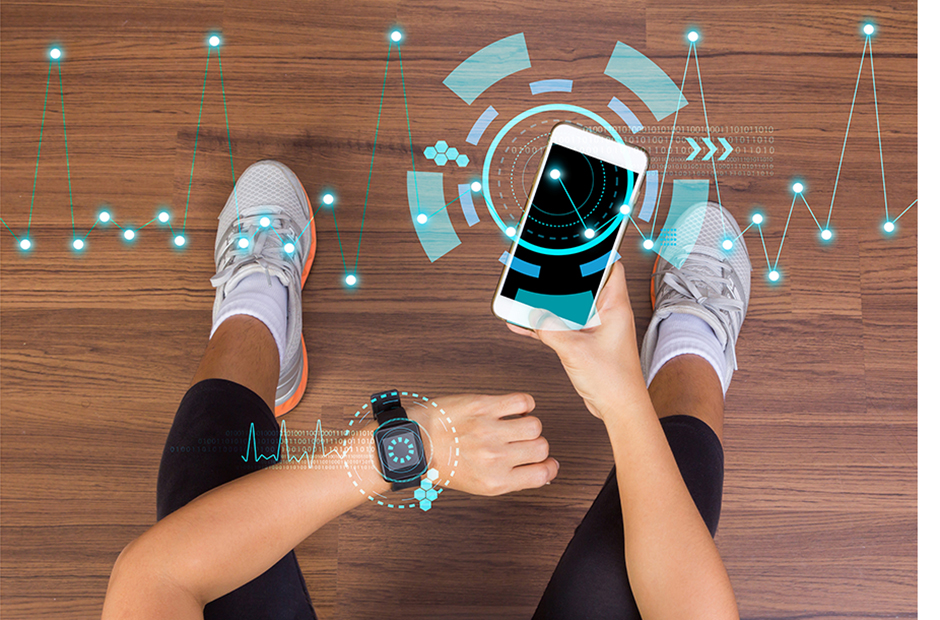Every minute on Facebook, approximately 510,000 comments are posted, 293,000 statuses are updated, and 136,000 photographs are uploaded.1 Growing evidence suggests that excessive use of social media may lead to symptoms that are usually associated with substance use disorder (SUD).
While technology addiction is not currently an underwritten condition, it is important for insurers to be aware of its increasing prevalence globally and understand its impact on health and wellbeing.
What is addiction?
Addiction is a chronic medical disease involving interactions between life experience, the environment, and one’s health and genetic makeup. Behavioral addiction is akin to substance addiction, but rather than being addicted to drugs or alcohol, an individual is addicted to a behavior or feelings brought about by that behavior, which leads to an inability to stop that behavior. Prolonged and repeated use of something (e.g., alcohol, drugs, or mobile phones) with the loss of behavioral control has the potential to cause medical, financial, and social problems. Symptoms can include anxiety, respiratory alterations, trembling, perspiration, agitation, disorientation, and tachycardia.2
Mobile phone use has been described as the biggest non-drug addiction of the 21st century.
Regular exposure to an addictive stimulus sparks the production of dopamine in the brain. This affects certain receptors – particularly in parts of the brain referred to as the ventral tegmental area and the amygdala – creating positive sensations when an addictive behavior is repeated. Effectively, anything that can stimulate an individual can become addictive.
Technology and social media addiction
Today, social media users spend an average of 145 minutes per day on platforms such as Facebook, Instagram, TikTok, WhatsApp, and YouTube.3 People who compulsively use social networking sites may experience symptoms similar to those commonly associated with substance-related addiction, such as altered mood, social withdrawal, increased tolerance, suicidal thoughts, functional impairment, and emotional abuse.
Smartphone addiction is part of social media addiction, as an estimated 75% of Facebook users access the platform via mobile phone.1 In many ways mobile phone addicts are as addicted to using their phones as alcoholics are to consuming alcohol. The term ‘nomophobia’ (NO Mobile Phone PhoBIA) was coined in 2008 to describe a psychological condition in which people have a fear of being detached from mobile phone connectivity.1 A study evaluating anxiety disorders in mobile phone users found that nearly 53% of British people surveyed become apprehensive when they do not have mobile phone connectivity, and up to 9% feel stressed when their mobile phones are turned off, a pre-disposing risk factor for depression.4
A separate study examining mobile phone use among 3,534 internet users aged 12-77 found that 76% of the group experienced more than five of 23 phone addictive behaviors, such as carrying a mobile phone at all times (91%), delayed sleep (62%), and checking notifications upon waking (85%). Overall, 46% of the study participants suffered from feelings of depression, 70% from levels of anxiety, and 14% from some form of sleep disturbance.4
Figure 1:
Gaming and gambling disorders
In 2017, the World Health Organization (WHO) identified gaming disorder for inclusion in the International Classification of Diseases (ICD-11).5 ”Internet Gaming Disorder” has been included in the Diagnostic and Statistical Manual of Mental Disorders (DSM-5) as a condition ”necessitating further clinical experience and research” before being added as a formal behavioral addiction.6
Between 0.3-1% of the general population has a potential diagnosis of internet gaming disorder. Evidence suggests that the pandemic has escalated the number of people gaming, with up to 62% of adults in the U.K. playing video games regularly during this period. Risk factors include young age, hours spent on the internet/social media, loneliness, and male gender. Spending more than four hours engaged on the internet/social media is a powerful predictor of problem/addictive gaming, increasing the probability 5.3 times compared to spending less than four hours engaged.6
Prevalence of mental health problems increases steadily with increasing video gaming, rising to 54% in females at five or more hours of use. For males, although mental health issues decrease initially, they increase sharply at four to five hours, rising to 30% at four hours or more. In a study of over 15,000 U.S. high school students, approximately one in three had depressive symptoms, and one in five had considered suicide. Prevalence of suicidal behavior at five hours or more gaming was 38% for females and 25% for males.7
Figure 2:
Other non-substance use disorders
Pathological gambling, characterized by persistent and repeated gambling that is disruptive to personal, financial, and family health, was officially recognized as a clinical disorder in 1980 when it was first included in the DSM-III. Today, it remains the only non-substance use addictive disorder that is a diagnosed disorder in the DSM-5. Up to half of individuals in gambling disorder treatment have had suicidal thoughts, and approximately 17% have attempted suicide. Many gambling addicts also experience SUDs.8
Buying-shopping disorder (BSD) is not officially recognized as a stand-alone non-substance use disorder. People with BSD use shopping as a coping mechanism to regulate emotions by experiencing either pleasure or relief after shopping. It has been linked to depression, anxiety, and other mood disorders, and can lead to financial distress, a sense of loss of control, and conflict with friends and family. Experts are urging that BSD be studied further and labeled as its own illness due to symptoms of craving, similar to those that enforce other behavioral addictions such as gambling.9
Treatment
Treatment of non-substance use addiction does not aim to encourage abstinence, but to encourage control and to avoid any negative consequences. Assessments often include psychometric measurements using tools such as the ”Questionnaire of Dependence of Mobile Phone/Test of Mobile Phone Dependence (QDMP/TMPD).” The Game Addiction Scale (GAS), another commonly used questionnaire-based tool, derives a score based on the DSM-5 criteria for gambling, which include salience, tolerance, mood modification, withdrawal, relapse, conflict, and problems. A score of more than 50% is used to diagnose addiction.
”Reality therapy,” which encourages patients to focus on activities such as gardening and painting rather than using a mobile phone, can be used in the treatment of these addictions. Pharmacological interventions using antidepressants such as tranylcypromine (Parnate) and anti-epileptics such as clonazepam (Klonopin), and cognitive behavior therapy (CBT) have also been tried. Dialectical behavior therapy (DBT) combines standard CBT techniques with concepts such as distress tolerance and mindfulness, brought in from Eastern traditions.9
The need for mental health services to help people with technology addiction is on the rise. Gaming addiction treatment is supported in the U.K. by the National Health Service’s National Centre for Behavioural Addictions. The center offers support to adolescents and young adults aged 13-25 whose lives are impacted by behavioral issues associated with gaming, gambling, and social media. Since its opening in 2019, the center has treated many teenagers who have threatened suicide if denied access to technological devices.10
In addition to pursuing therapeutic treatments, many countries are now addressing causes of technological addiction. For example, legislation was introduced in South Korea banning access for those aged under 16 from online gaming between midnight and 6 a.m. In China, the multinational technology and entertainment conglomerate Tencent limits the number of hours that children can play its most popular games.11
Summary
Technology addiction is rapidly increasing with growing access to and use of social media platforms and smartphones, particularly in adolescents and young adults. Excessive users of the internet and mobile phones are at high risk of non-substance use disorder and subsequent mental health issues. While technology addiction is not currently an underwritten condition, the increasing symptoms associated with it may lead to more young people paying higher premiums for insurance cover at outset, and/or insurance companies paying out a higher number of claims than expected due to mental health conditions.



